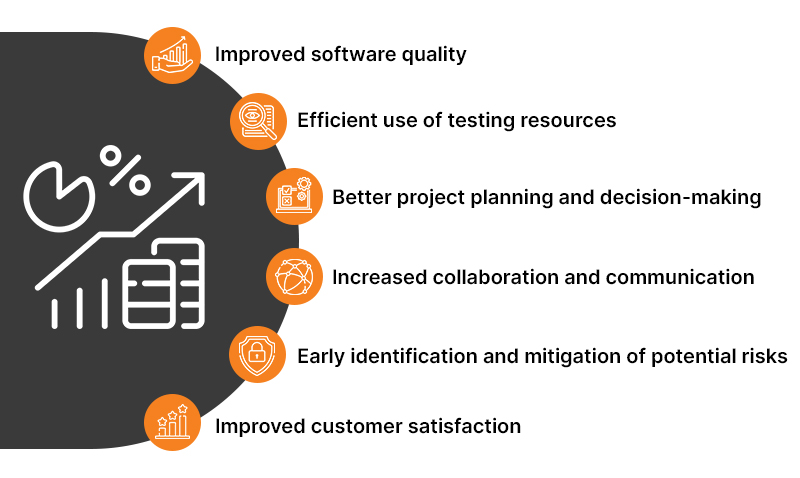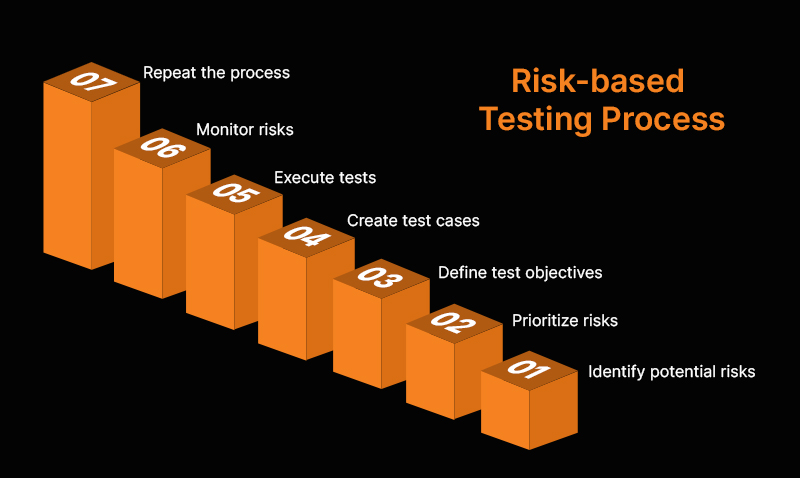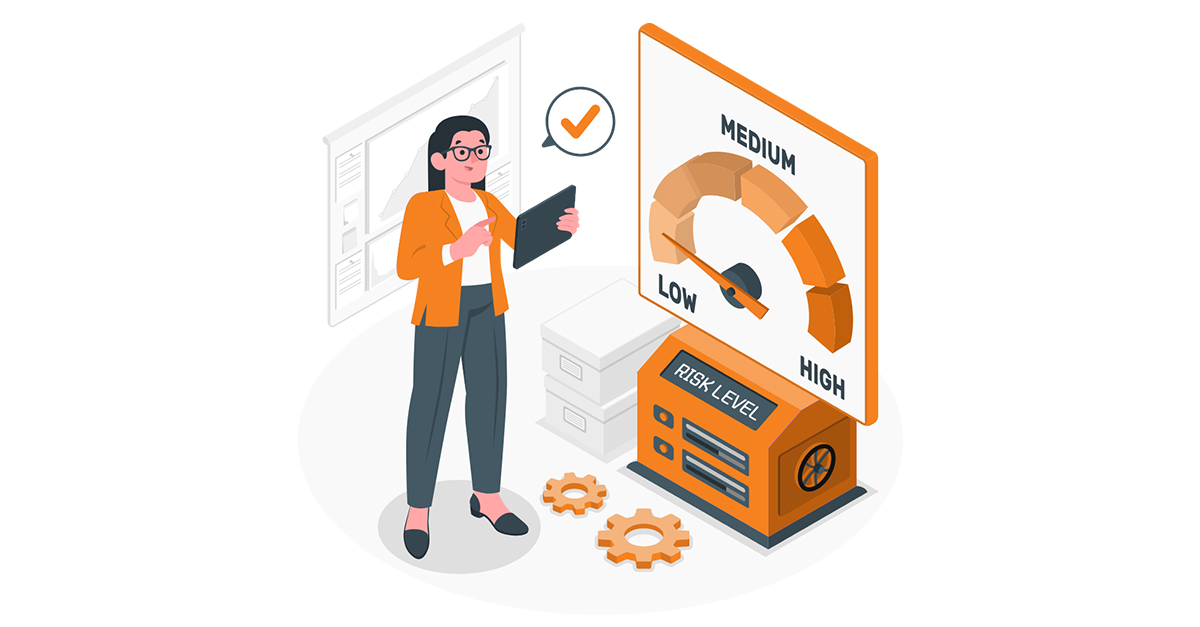As businesses grow and expand, so do their software needs. Mainly scale-ups that are quickly expanding their operations and require agile software development to keep up with their growth. However, with the increased complexity and size of software development projects, it can be challenging to ensure that all aspects of the software are thoroughly tested while meeting project timelines and budget constraints.
This is where risk-based testing comes into play.
So in this blog post, we will discuss the benefits of risk-based testing in Agile for Scale-ups and provide a guide on how to conduct risk-based testing effectively. We will also cover essential metrics to track and measure the success of risk-based testing efforts. With this information, you can ensure that your software development projects are of high quality, efficient, and meet your business needs.
What is Risk-Based Agile Testing?
Risk-based agile testing is an approach to software testing that prioritizes the testing effort based on the potential risks associated with the software. This approach helps to ensure that the most critical and high-risk areas of the software are thoroughly tested, while less critical areas receive less testing effort.
The goal of risk-based agile testing is to identify potential issues and risks early in the software development life cycle so that they can be addressed before they become bigger problems. This approach also helps to reduce the overall testing effort while still ensuring that the software is of high quality.
Apart from risk-based testing, find out how to “Upgrade your Software Testing Procedures with these Latest 2023 Trends”.
Benefits of Risk-Based Testing in Agile

Here are six key benefits of risk-based testing in Agile:
1. Improved software quality
By identifying and mitigating potential risks early in the development cycle, risk-based testing can help to ensure that the software is high quality, with fewer defects and issues. This can ultimately lead to better user experiences and greater customer satisfaction.
2. Efficient use of testing resources
Risk-based testing helps to prioritize testing efforts based on the potential impact and likelihood of each risk, ensuring that the most critical and high-risk areas of the software are thoroughly tested. In contrast, less critical areas receive less testing effort. This approach can optimize testing resources and improve overall software testing efficiency.
3. Better project planning and decision-making
It provides valuable information about the potential risks associated with the software being developed, allowing the software development team to make more informed decisions about project planning and resource allocation. This approach can ensure that project timelines are realistic and that resources are allocated appropriately.
4. Increased collaboration and communication
Risk-based software testing requires collaboration and communication between different stakeholders involved in the scaleup software development process, including business analysts, developers, testers, and project managers. This approach can improve team communication and collaboration, leading to better teamwork and overall project success.
4. Early identification and mitigation of potential risks
Risk-based testing for scaleups allows potential risks to be identified early in the development cycle, which can help prevent or mitigate any negative impact on the software’s quality, performance, or success. This approach can reduce the cost and time required for defect resolution and can ultimately lead to a smoother and more successful software development process.
5. Improved customer satisfaction
By ensuring that the software is of high quality and free of critical defects, risk-based testing can help to improve customer satisfaction with the software being developed. This approach can help to build customer loyalty and trust, leading to increased business success in the long term.
6. Purpose of Risk-Based Testing in Agile
The purpose of risk-based testing in Agile is to ensure that the software being developed is of high quality and that any potential risks or issues are identified and addressed early in the development cycle. This approach involves identifying potential risks and prioritizing testing efforts based on the potential impact and likelihood of each risk. By doing so, the software development team can focus their testing efforts on the most critical and high-risk areas of the software, ensuring that these areas are thoroughly tested. In contrast, less critical areas receive less testing effort.
Steps of Risk-Based Testing

Here are some steps to follow when conducting risk-based testing in Agile:
1. Identify potential risks
The first step in risk-based testing is to identify potential risks that could negatively impact the quality, performance, or success of the software being developed. This can be done through various techniques such as brainstorming, risk assessment, and analysis of business requirements.
2. Prioritize risks
Once potential risks have been identified, the next step is to prioritize them based on their potential impact and likelihood. This can be done using a risk matrix or other prioritization techniques. The most critical and high-risk areas of the software should be given the highest priority.
3. Define test objectives
Based on the identified risks, the dedicated software developers should define test objectives and criteria for each risk. These objectives should outline what needs to be tested and how it will be tested.
4. Create test cases
Test cases should be created based on the defined test objectives and criteria for each risk. Test cases should be designed to validate the functionality and performance of the software in the areas of highest risk.
5. Execute tests
Once the test cases have been created, they should be executed to validate the functionality and performance of the software in the areas of highest risk. Test results should be documented and analyzed to identify any defects or issues that need to be addressed.
6. Monitor risks
Risks should be monitored throughout the software development process to ensure that any changes or new risks are identified and addressed promptly. This can help to prevent any potential issues from becoming critical and negatively impacting the quality, performance, or success of the software.
7. Repeat the process
Risk-based testing in Agile is an iterative process, and it should be repeated as new risks are identified, or changes are made to the software. This can help to ensure that the software remains of high quality and that any potential risks are identified and addressed promptly.
Wrapping Up
In a rapidly changing business landscape, having an agile, efficient, and effective software development process is crucial. With the help of QA testing experts, risk-based testing in Agile can help businesses stay ahead of the competition by delivering high-quality software projects that meet their needs and exceed their customers’ expectations.
Become future-ready with our hybrid
QA outsourcing services.
Request Free Consultation
Summary
Kickstart Your Project With Us!
Popular Posts
CONTACT US
Let's Build Your Agile Team.
Experience Netsmartz for 40 hours - No Cost, No Obligation.
Connect With Us Today!
Please fill out the form or send us an email to







